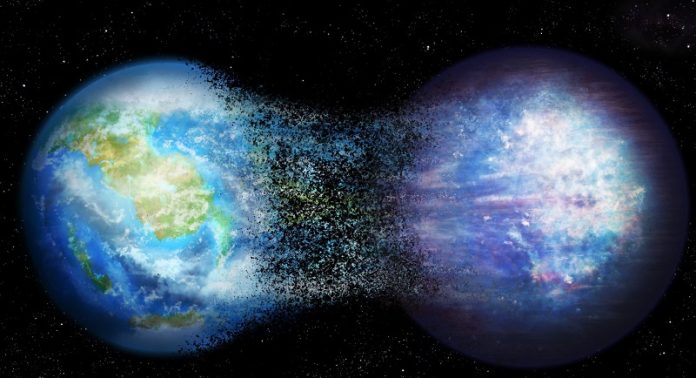
Scientists have made a startling discovery about how a planet’s climate can switch from being habitable, like Earth, to extremely hostile, like Venus, with just a slight change in temperature.
Researchers from the University of Geneva, supported by French CNRS labs in Paris and Bordeaux, have successfully simulated the complete process of a runaway greenhouse effect, a phenomenon that can drastically alter a planet’s climate.
Their findings are published in Astronomy & Astrophysics.
The Earth, our blue and green home, is brimming with life, largely thanks to its balanced climate.
Venus, on the other hand, presents a stark contrast: a barren, yellowish world with extremely harsh conditions.
What separates these two planets is a relatively small difference in temperature, but this difference has profound effects on their climates.
The runaway greenhouse effect, which the researchers simulated, is a process where a planet transitions from a temperate climate to extremely high temperatures, potentially exceeding 1,000°C.
The key player in this process is water vapor, a natural greenhouse gas. While some greenhouse effect is necessary for a planet to maintain a livable temperature, too much of it can be disastrous.
Water vapor traps heat like a thermal blanket.
If a planet has too much of it, the water from its oceans evaporates, increasing the amount of water vapor in the atmosphere. This leads to a critical threshold where the planet can no longer cool down, setting off a chain reaction that leads to extreme heating.
Guillaume Chaverot, the study’s main author, explains that once this threshold is crossed, the planet’s oceans could fully evaporate, sending temperatures skyrocketing.
Martin Turbet, a co-researcher, emphasizes the novelty of their work: for the first time, a team has used a 3D global climate model to study this transition period, observing how the climate and atmosphere evolve during the runaway greenhouse effect.
A surprising aspect of their study is the emergence of a unique cloud pattern that intensifies the runaway effect and makes it irreversible.
Early in the transition, dense clouds form in the high atmosphere, fundamentally altering its structure. This change is crucial as it disrupts the typical temperature inversion that separates the Earth’s atmosphere into the troposphere and the stratosphere.
This research has significant implications for the study of exoplanets – planets orbiting stars other than the sun.
Understanding the climates of these distant worlds is essential for determining their potential to support life. Émeline Bolmont, assistant professor and director of the UNIGE Life in the Universe Center (LUC), points out that the discovery of this cloud pattern is a major surprise and could be a detectable ‘fingerprint’ in the atmospheres of exoplanets with advanced telescopes.
The team’s new climate models suggest that a small increase in solar irradiation, leading to a rise in Earth’s global temperature by just a few tens of degrees, could trigger this irreversible process on our planet.
Chaverot’s ongoing research aims to explore whether greenhouse gases could initiate this process, similar to a slight increase in the sun’s luminosity.
The study reveals a precarious balance on Earth. A mere 10 meters of ocean evaporation could significantly increase atmospheric pressure, and within a few hundred years, temperatures could exceed 500°C.
Eventually, with all oceans evaporated, Earth could face a surface pressure of 273 bars and temperatures above 1,500°C.
This research underscores the delicate equilibrium of Earth’s climate and the thin line between a planet being a cradle for life and a hellish, uninhabitable world.



